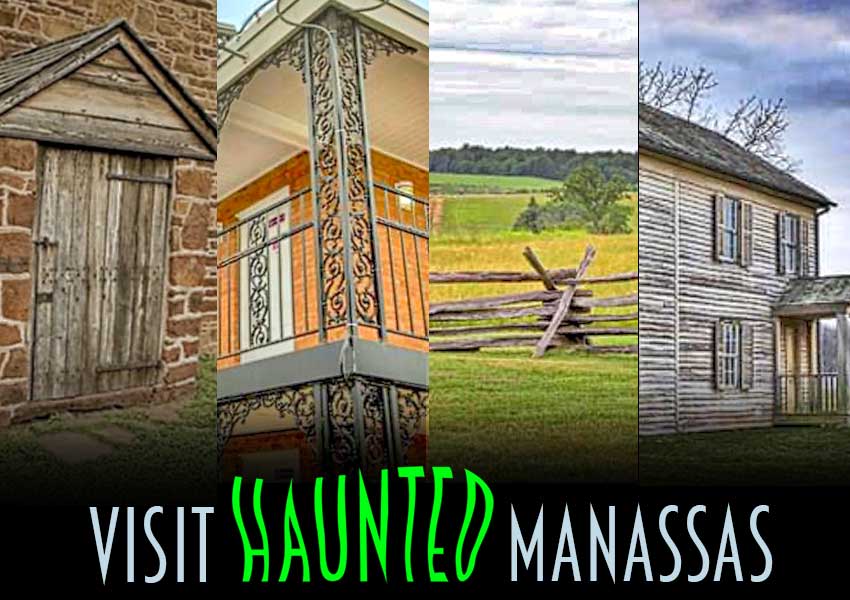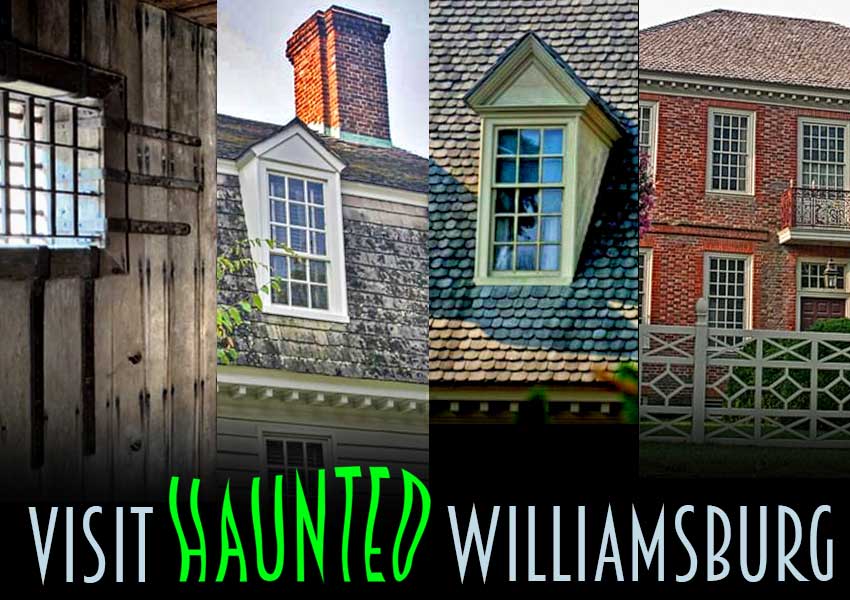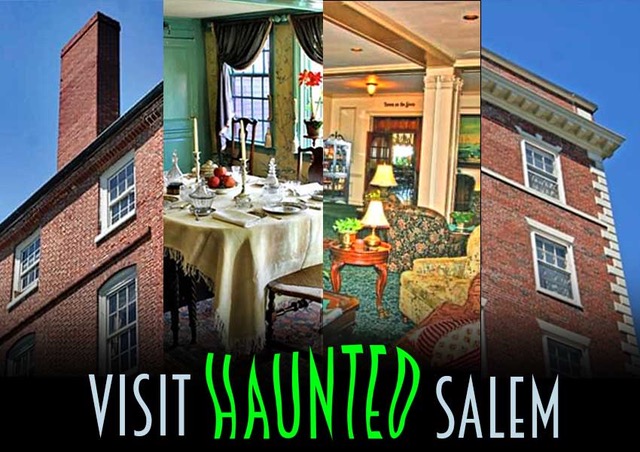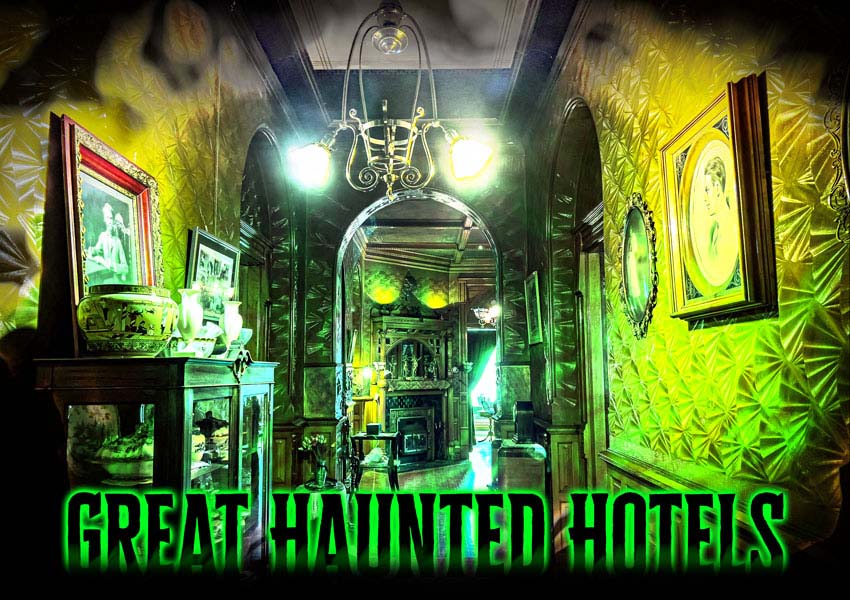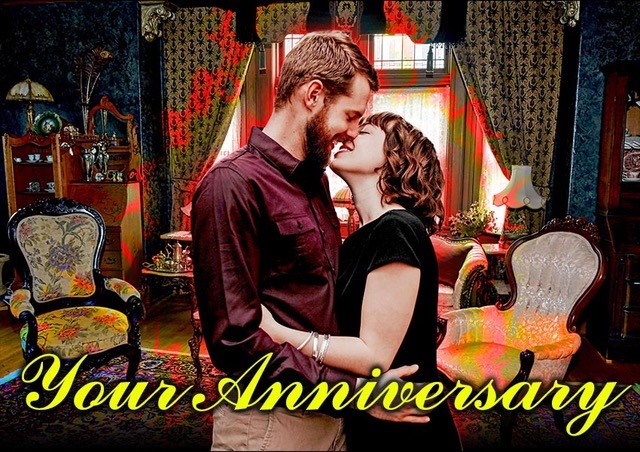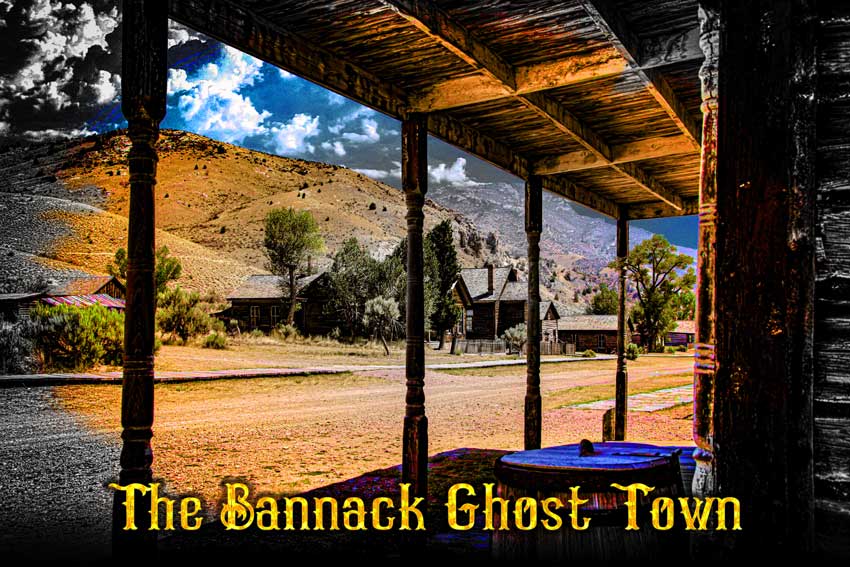Portland Maine
McLellan-Sweat House
The same male spirit who patrols the Charles Clapp House,
does the same here, but perhaps in a better mood.
An unknown female spirit is also there,
who could be either very pleased or annoyed.
There are theories as to who she may be.
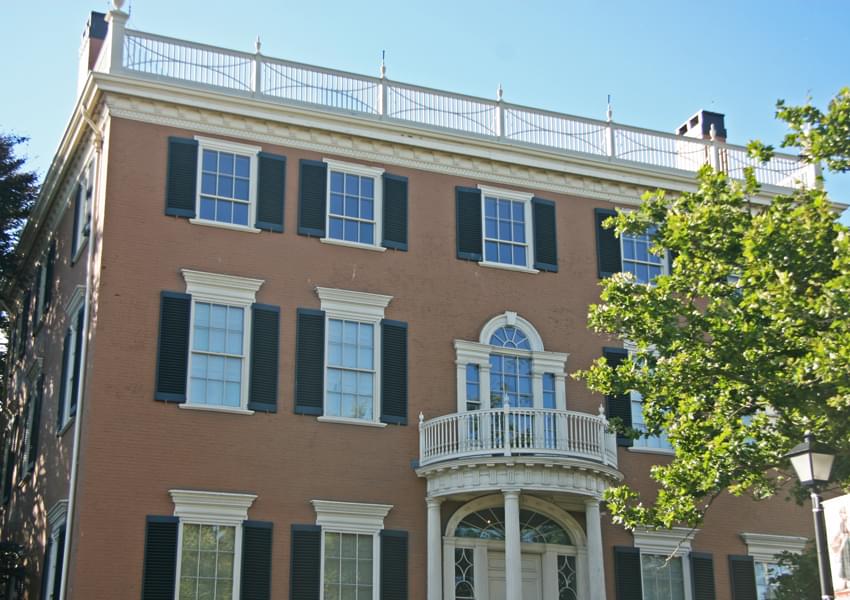
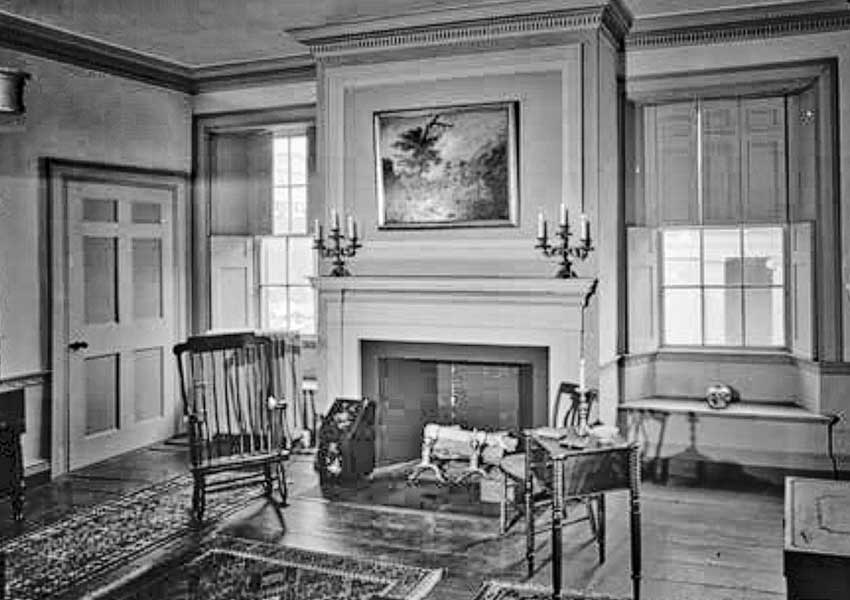
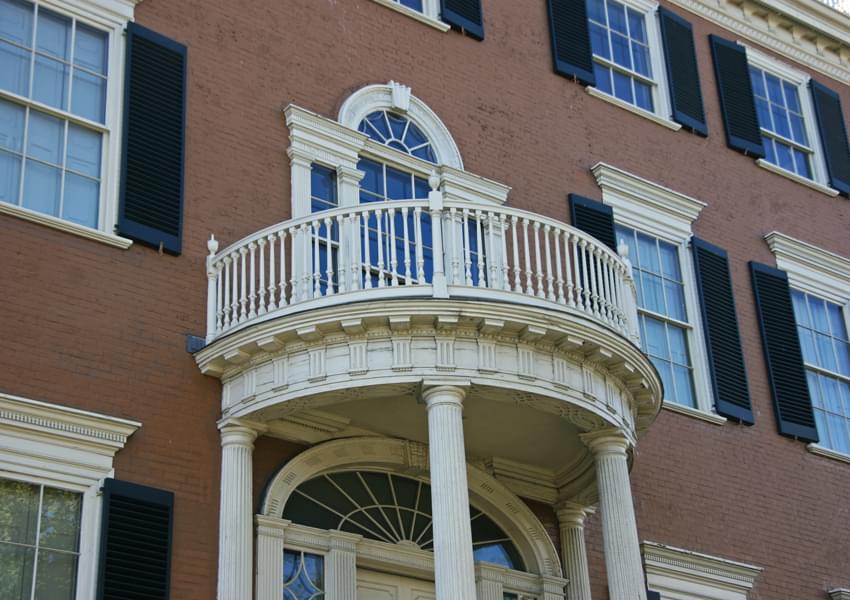
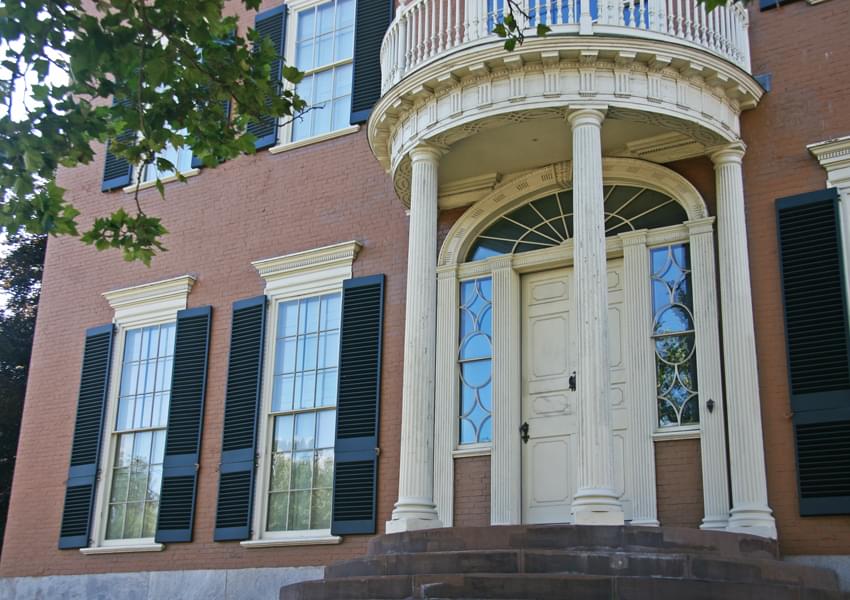
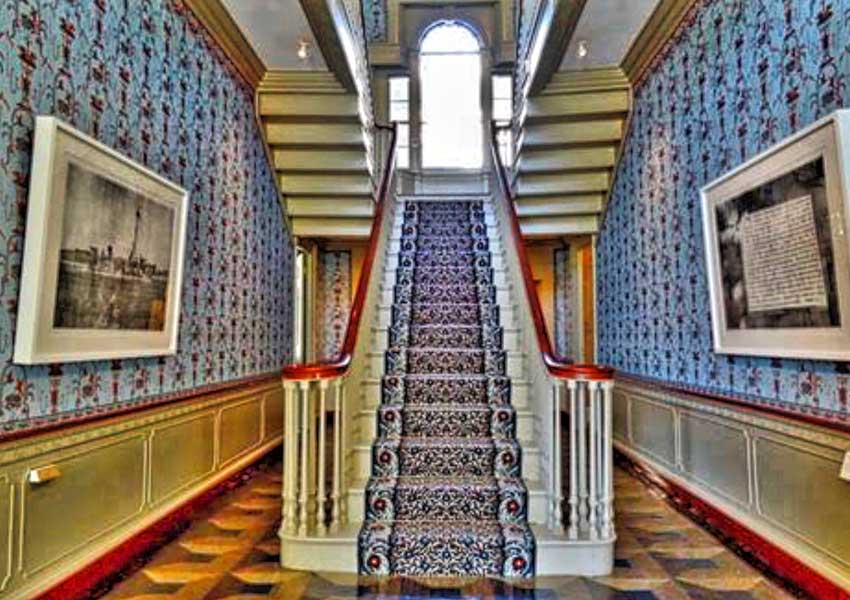

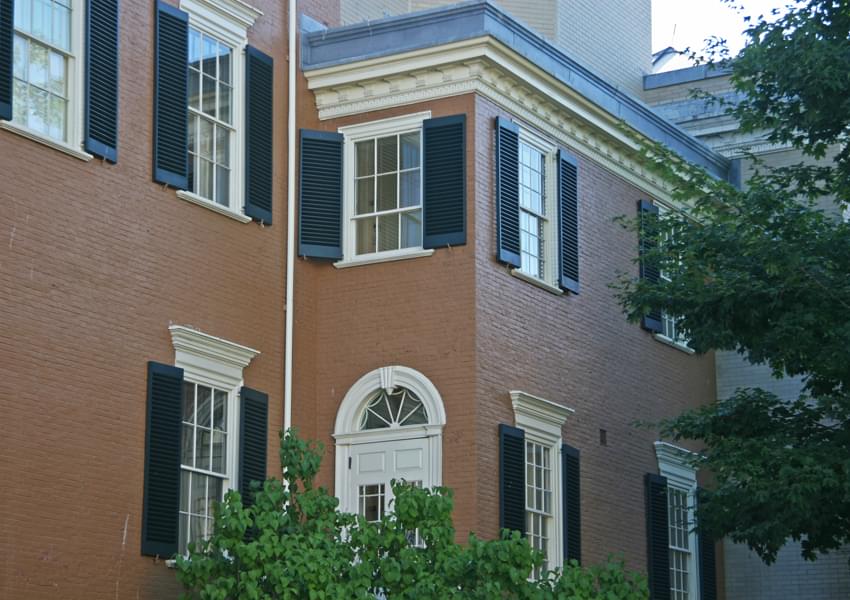
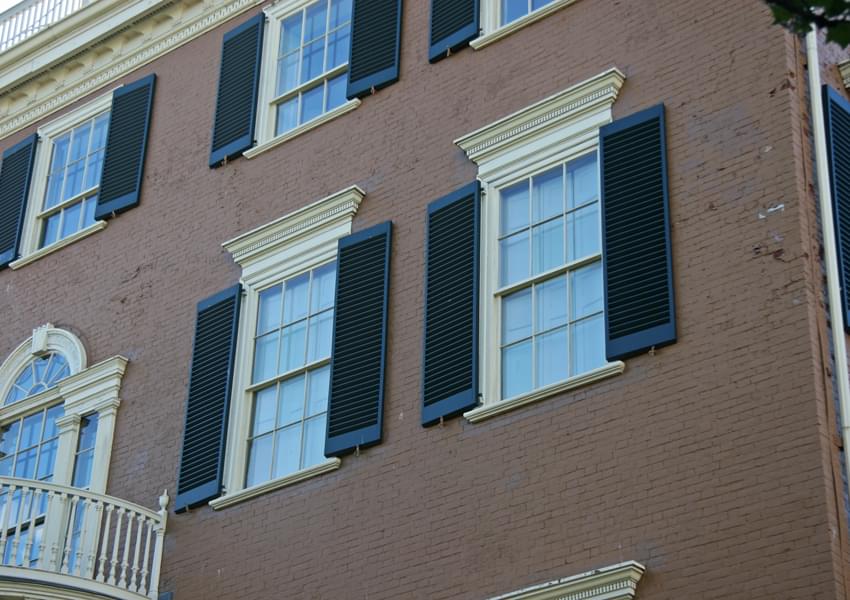
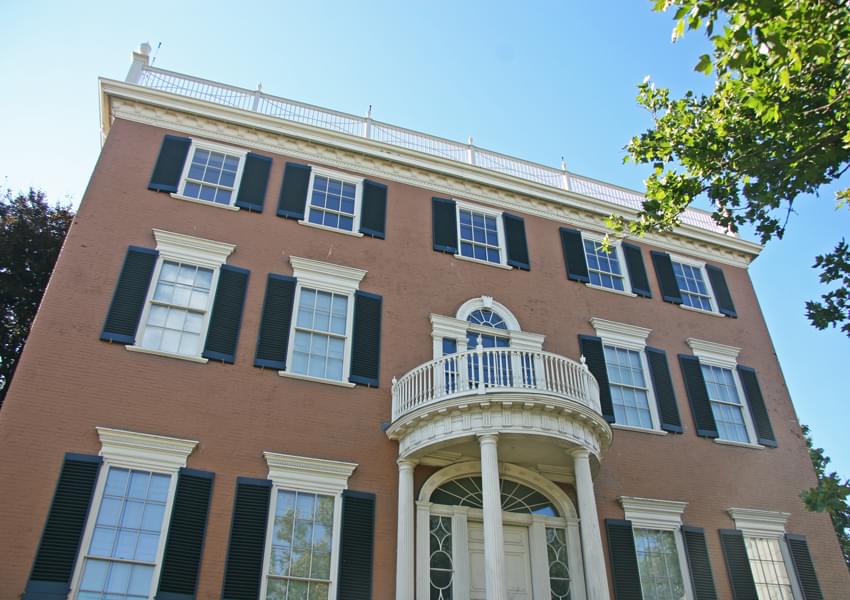
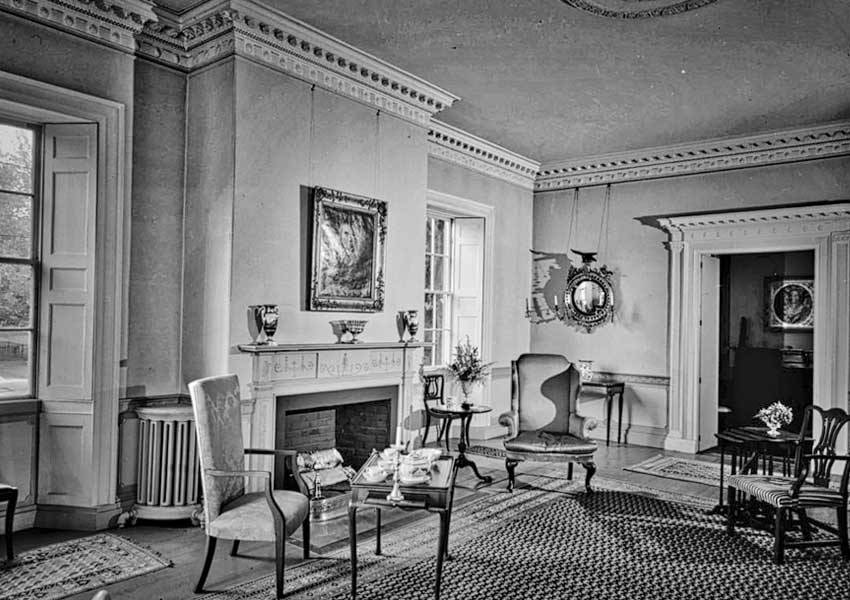
DESCRIPTION / HISTORY
The neighborhood in which the McLellan-Sweat House is found was originally built during Portland’s “Golden Age”, a time of economic recovery and development for this port city (1800-1860). Around 1800, Portland had recovered from the destruction suffered during the Revolutionary War, and a booming economy based on healthy merchant and shipping businesses had brought wealth and status to the entrepreneurs at the helm of this economy.
Construction of new homes for the successful ones showed their wealth in their new dream homes. Wealthy shipping entrepreneur, Hugh McLellan, bought the big corner lot at Spring and High Street. He built his three story, brick Federalist style dream home, spending 20,000 dollars. Hugh McLellan conducted most of his business with the British.
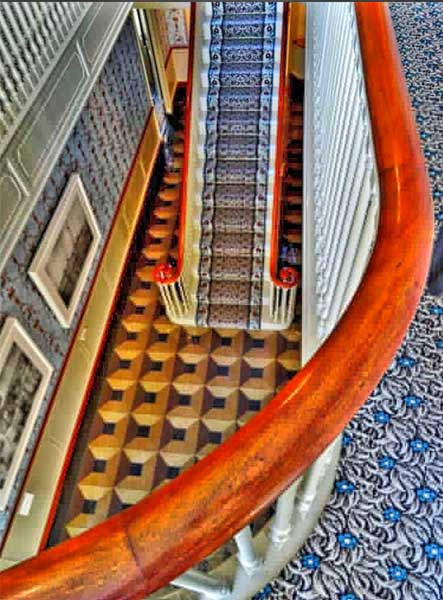 Designed by the great architect John Kimball Sr., the McLellan-Sweat House is considered to be a premiere example of Kimball at his best. It is described as a 3 story, 4 square brick mansion, done in the Federalist style, complete with a hipped roof on the lower third story. Inside, the central staircase is described as being a flying staircase, and the extensive carved wood throughout the house was a marvel to see, much admired, and worth preserving.
Designed by the great architect John Kimball Sr., the McLellan-Sweat House is considered to be a premiere example of Kimball at his best. It is described as a 3 story, 4 square brick mansion, done in the Federalist style, complete with a hipped roof on the lower third story. Inside, the central staircase is described as being a flying staircase, and the extensive carved wood throughout the house was a marvel to see, much admired, and worth preserving.
Hugh McLellan and his family happily lived in their beloved home until 1807, when two events happened, causing unhappiness and havoc.
McLellan’s wife, Abigail died in 1807. Also in 1807, the British started a trade embargo, which slowly strangled Hugh McLellan’s business. From 1807, through the War of 1812, He mostly had business arrangements with British companies. By 1815, the new American government wasn’t very understanding and threatened to put the McLellan home up for auction, unless Hugh paid all his back taxes. Perhaps the government suspected him as being a Loyalist, though there is no proof of that.
Unfortunately, the McLellan’s had to move out, and put the home up for sale or lease. In 1817, Captain Asa Clapp bought the McLellan-Sweat House for a mere 4,050 dollars! It sounds like a short sale, because Hugh was able to sell floor coverings and other items to Captain Asa Clapp as well. Captain Asa Clapp never moved into the home himself, as he had his own dream home on Congress Street, but gave it as a wedding present to his son, Charles Quincy Clapp, when Charles married Julia Wengate, daughter of General Joshua Wingate.
Twelve years later, Charles Clapp bought the lot next to the McLellan house and built his own dream home, a Greek Revival mansion, complete with pillars. In 1832, when he and his family moved into it, Charles sold the McLellan House to his father-in law, General Joshua Wingate, following his father’s example.
During the financial scare of 1837, Charles ran into financial issues, and sold his beloved Greek Revival temple-like home to his father, Captain Asa, and moved back into the McLellan home in 1843, after his father-in-law died. Well, since he couldn’t live in his dream home nextdoor, he made himself feel better by adding black marble Greek Revival mantles on the first floor fireplaces. He also lowered the ground floor facade windows.
Charles and Julia Clapp lived there until they died. In 1877, the daughters of Charles and Julia sold the McLellan House to former Senator Colonel Lorenzo de Medici Sweat and his wife, Margaret Jane Sweat, probably knowing that this pair would take good care of the family home. Margaret Sweat believed strongly in historical preservation, as she had been bitten by the restoration bug when she helped to restore Mount Vernon.
Excited to be living in this McLellan House, now the McLellan-Sweat House, Margaret Jane carefully added her artistic touches to the home, being careful not to alter the structure. She added Victorian wallpaper, and put a door between the library and drawing room. In the dining room, Margaret Jane added both a gorgeous French-carved oak over mantle on the fireplace and a Gothic ceiling as well. For good measure, Margaret Jane added a chair rail and baseboards.
When the good Colonel Lorenzo died, Margaret Jane Sweat rewrote her will. She not only left an endowment for the Portland Society of Art (an organization she was an active member of), to build an adjoining art galley building to the McLellan-Sweat House, in honor of her husband, but also deeded the McLellan-Sweat House to the Portland Society of Art to be preserved as a 19th century home. She stipulated that no changes could be made to the exterior of the home or to the decor of the principle rooms of the house.
 The Portland Society of Art got right to work, hiring long-time member, John Calvin Stevens, who built a lovely Beaux-Arts structure in 1911, that connects directly to the back door of the McLellan-Sweat Home by a connecting corridor. Looking at the L.D.M. Sweat Memorial Galleries building, many architectural details of the McLellan-Sweat home are copied, creating two structures that meld together nicely.
The Portland Society of Art got right to work, hiring long-time member, John Calvin Stevens, who built a lovely Beaux-Arts structure in 1911, that connects directly to the back door of the McLellan-Sweat Home by a connecting corridor. Looking at the L.D.M. Sweat Memorial Galleries building, many architectural details of the McLellan-Sweat home are copied, creating two structures that meld together nicely.
Then, in 1957, the Portland Society of Art, petitioned the court and got permission to break with the stipulations for the interior of the McLellan-Sweat House, so clearly stated in the deed. The Portland Society of Art had decided to “limit the period of decoration inside to the time of construction.”
Uh oh.
The Greek-revival mantles were removed, and replaced with period wood surrounds, that were rescued from the Commodore Edward Preble House that probably was being torn down. While dumpster diving is a great pastime for many, they probably bought them directly from a dealer.
The Victorian wallpaper, the Gothic ceiling, and the wooden over mantle were removed from the dining room, but the chair rail and baseboards stayed. It has been a pain-staking process reconstructing the decor, which included studying other homes of the same era, to truly restore McLellan-Sweat House to an 1800 home.
Both of these buildings were the main part of the Portland Museum of Art for many years, until 1980, when they were closed to the public, during the building of the new museum wing. The 62,500 sq foot Charles Shipman Payson Building opened in 1983.
Due to lack of money, the McLellan-Sweat House Museum and the L.D.M. Sweat Memorial Galleries building remained closed for 20 years. In October of 2000, after 13.5 million was raised, restoration of both of the buildings began, and was finished in time for the grand opening on October 5th, 2002.
It was a pain-staking process, but paying such close attention to detail won the Portland Museum of Art and Ann Beha Architects a prestigious National Preservation Award from the National Trust of Historic Preservation for their restoration of the McLellan Sweat House and the L.D.M. Sweat Memorial Galleries.
The website explains the decor now seen within the McLellan-Sweat House.
“The interior reflects how it could have been decorated following its construction in 1801. The architectural elements of the original structure still have such a presence that, rather than creating fully furnished and decorated period rooms, a carefully thought out design philosophy has been developed that employs wall and floor coverings and modern furnishings to complement the expression of the architecture.” This dynamic duo of historic with modern “encourages the accessibility of the spaces for activities ranging from educational programs to elegant receptions”.
The L.D.M. Sweat Memorial Galleries now displays 19th century art, that is very much valued by Portland and visitors, while the McLellan-Sweat House is a combination of being a house museum, educational center, and social event venue, making very good use of the space within this historic structure.
HISTORY OF MANIFESTATIONS
Antique furnishings/pictures can have spirits attached to them.
There are some antique furnishings/pictures found in L.D.M. Sweat Memorial Galleries building, and possibly in McLellan-Sweat House.
Restorations/renovations or other changes done on a cherished home of the departed, can act as environmental triggers that bring spirits back into the house, or make existing spirits in the structure more active in this world:
Because the Restoration of the beloved home pleases them, or the changes/remodeling/abuse caused by the living are distressing to them, even though their beloved dwelling is stable and cared for now.
These scenarios are relevant in the case of the McLellan-Sweat House, as possible causes of the paranormal activity:
Restoring the house back to its original Federalist Era structure must have thrilled the spirits of Mrs. McLellan, Mrs. Wingate, and Mrs. Julia Clapp, and perhaps an envious neighbor who longed to live in such a house (probably spied by a clairvoyant).
It is possible that this envious female spirit could’ve attached to one of the period chairs that was in the neighbor’s house, and simply traveled with it when it was bought and put into the L.D.M. Sweat Memorial Galleries building, or even perhaps in McLellan-Sweat House for a display.
However, Mrs. Jane Sweat, and Captain Asa Clapp may be not pleased or too trusting:
Mrs. Margaret Jane Sweat – while being initially pleased about the L.D.M. Sweat Memorial Galleries, may be more than a bit annoyed with the living, for:
Closing both museums for such a time, and then not living up to the deed stipulations.
They removed her contributions that she was so proud of; her gothic ceiling and carved wood overlay, both found in the dining room, and all her Victorian wallpaper and decor she lovingly had planned as well.
Captain Asa Clapp – When the living tore down his own dream home, located on Congress Ave, because of his wife’s request in her will, this must have upset Captain Asa Clapp greatly, making him distrustful of the living to care for his other two properties, The Charles Q Clapp House and The McLellan-Sweat House.
MANIFESTATIONS
Female entity
Don’t know for sure who this entity was in this world, due to a lack of investigation. Could be Mrs. McLellan, Mrs. Wingate, Mrs. Julia Clapp, or Mrs. Jane Sweat.
Others think that this entity could be an envious neighbor mentioned above who always yearned to live in this home.
Her apparition has been seen around the three storied historical home:Perhaps reliving her memories, and enjoying the artwork and projects on display as well.
And/Or
Perhaps fretting about the changes done inside the home, such as the removal of the gothic ceiling, and the oak overlay of the fireplace, or the removal of the Greek revival style black marble fireplaces.
Male Entity
Identified as Captain Asa Clapp
He has stepped up to the plate to be a spectral supervisor, joining the docent team as an unpaid volunteer.
His apparition has been seen patrolling the home.
Possibly as protector, perhaps keeping an eye on the people who staff the house museum.
Perhaps he is enjoying the exhibits and interactive activities on display, and staying in the home he never stayed at as a live-in owner. He must be amused to watch visitors use the computers at the interactive educational stations.
PARANORMAL FINDINGS
Staff and visitors have had personal experiences such as feeling cold spots, hearing footsteps in an empty room and feel an unseen presence is supervising them.
STILL HAUNTED?
Possibly so. While there is a serious lack of captured evidence, or reported experiences that have been made public, it is entirely possible that the few reports that made it into a book or two are true, as people have seen and experienced some sort of paranormal activity.
Not much has been made public about the paranormal activity that staff have seen or experienced in this stately Federalist home. Any paranormal investigation, either scientific or psychic that may have been done, has been kept strictly private. The museum wants to be seen as a historical house museum, that provides educational opportunities and a safe place to have events. They don’t want to be a draw for people interested in the paranormal, a common theme found with many historical places used for educational purposes.
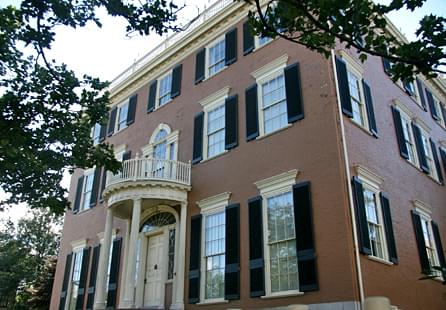
LOCATION
95 Spring Street
Portland, Maine
Corner of Spring St. and High St., in Portland, Maine.
The McLellan-Sweat House can be found on the corner of Spring St., and High St., one block north of Congress. It is right next to the Charles Q Clapp house, that you can’t miss as it looks like a Grecian temple!
SOURCES INCLUDE
- portlandmuseum.org/about/facts/
- portlandmuseum.org/DECOR
- portlandmuseum.org/Content
- Ghosts of Maine, by T.M. Gray, Schiffer Publishing, 2008.
- McLellan House Decor
- McLellan House Interactivities National Preservation Honor Award
- McLellan House Press Kit
Our Haunted Paranormal Stories are Written by Julie Carr

